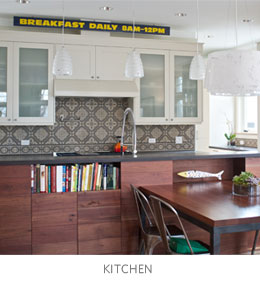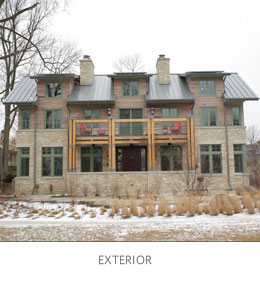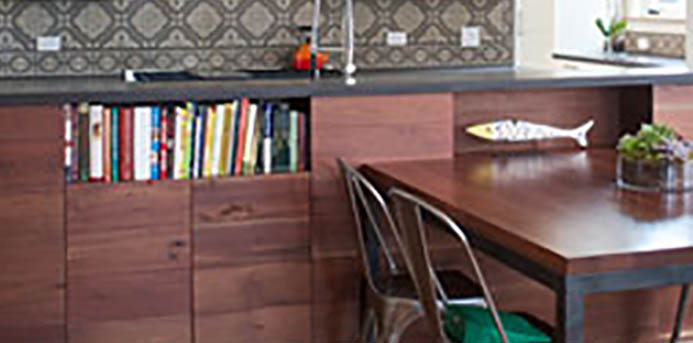As luck would have it, the housing bubble was at its peak in 2008 when Sarah Schmidt and Julie Matthei began house hunting for a home spacious enough for them to raise their three growing children.
“We had outgrown our place in Evanston, and our initial thought was that we wanted to remodel another old house,” Matthei says. Those plans changed when they finally found a wreck of house on an ideal, nearly lakefront lot in Wilmette. Rather than pass up the primo location, they decided to demolish and build their dream home in an eco-friendly way. “We were going to build a big house, and that’s not a very ‘green’ thing to do, so it was important for us to do it thoughtfully,” Schmidt explains.
According to their friend and builder Scott Simpson, eco-friendly projects are often good ones, for the simple reason that they require that all the contractors communicate with each other from the very beginning. “We’ve been banging that drum for years,” he explains.
![]()

Simpson knew the latest building techniques and had experience building with the type of reclaimed materials that were used throughout the home. For example:
- The hardwood floors and chunky stair treads were reclaimed by Wisconsin-based Urban Evolution, from a former Thomas Edison factory in Michigan.
- Old Pickle barrels from Vlasic were used to make the exterior siding and the barn-style closet doors in the basement.
- Most of the kitchen and bathroom tile throughout the house is French encaustic tile that was taken from the former Mallinckrodt convent at Ridge and Lake.
![]()

According to Matthei, much of the old house was stripped and hauled away. “It’s common practice now to recycle a house when you tear it down,” she adds. Also becoming common practice are the green building techniques Simpson used to build Schmidt and Matthei’s new home.
![]()

- Insulate your house. According to Simpson, insulation is the lowest hanging fruit when it comes to green building. If you’re building new, invest in the best insulation, and anybody can seal drafty doors and windows.
- An open layout = fewer walls = less environmental impact. Enough said.
- Give up granite. For their kitchen, Schmidt and Matthei selected PaperStone kitchen counter tops, which are made from treated recycled paper.
- Fallen trees = gorgeous furnishings. The fireplace mantels, windowsills, desktops, counter and bar surfaces—even the living room coffee table—were made from a tree that had stood on the property.
- Conserve water (even if you can see Lake Michigan from the front porch): Schmidt and Matthei water their lawn with water harvested from an 8,000-gallon water-harvesting tank they had installed along the driveway. They also chose dual-flush toilets, an auto-flush urinal and a very efficient water heater.
Although the project took a few months longer than they had originally anticipated, Schmidt and Matthei were able to take possession just 10 days before hosting 120 guests at the rehearsal dinner for their wedding. “The decisions we were making about the house were not the most important decisions we were making in our lives,” Schmidt says. “At the end of the day, it’s a house, and it’s going to be here a long time.”
Cheers!

Captions
Windows: Schmidt and Matthei skipped drapes in favor of motorized roller shades. “We wanted privacy, but we didn’t want to lose the daylight,” Schmidt says.
Bathroom tile / Kitchen backsplash: Most of the tile throughout the house was reclaimed from the former Mallinckrodt convent in Wilmette. According to Matthei, the French encaustic tile was made from concrete in the late 1800s. “The color is poured in the concrete, and that’s why it works so well despite all the chipped edges,” she says.
Exterior: Simpson nailed the reclaimed clapboard siding to a frame rather than to the plywood. “It creates a rain screen that allows the air to dry the boards, which extends its natural life,” Simpson explains. Simpson also separated the boards, which gives the siding a shadow line that creates the home’s unique aesthetic.

